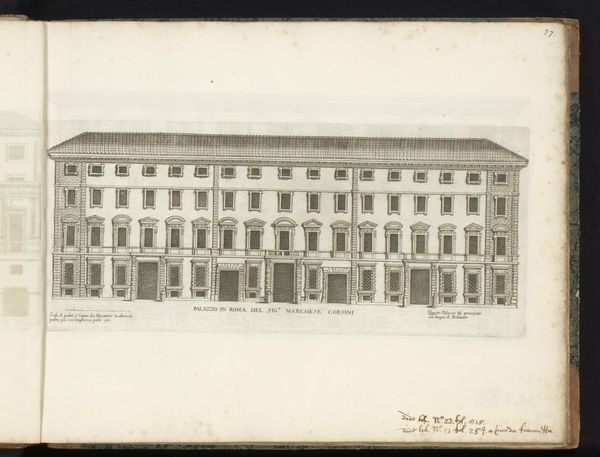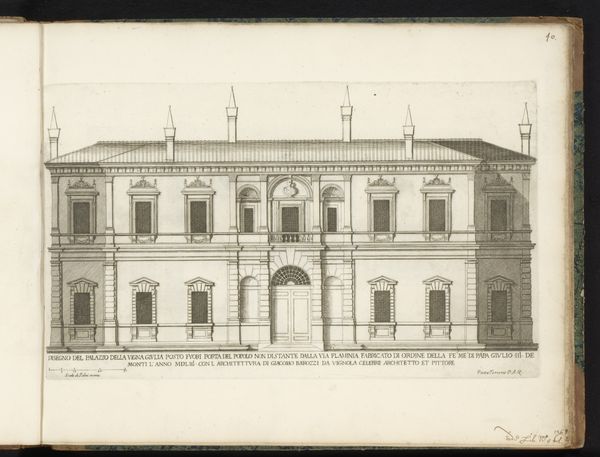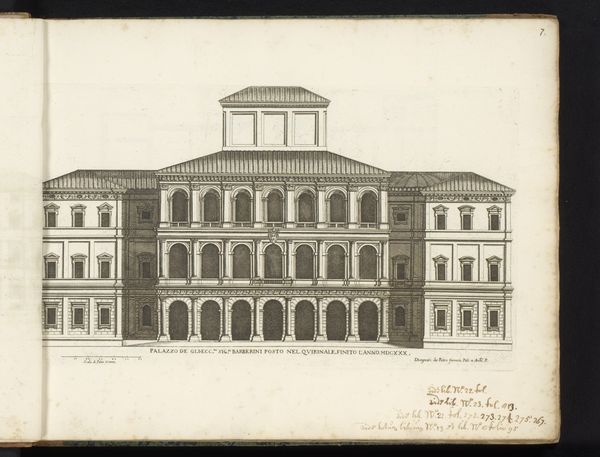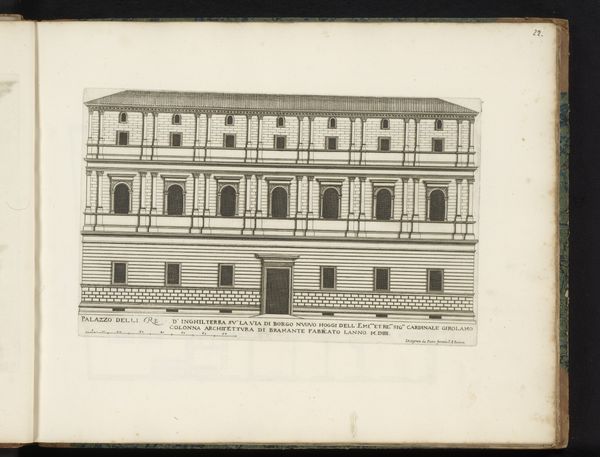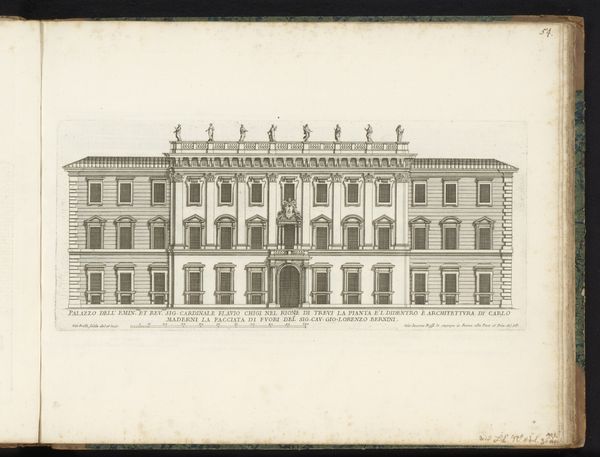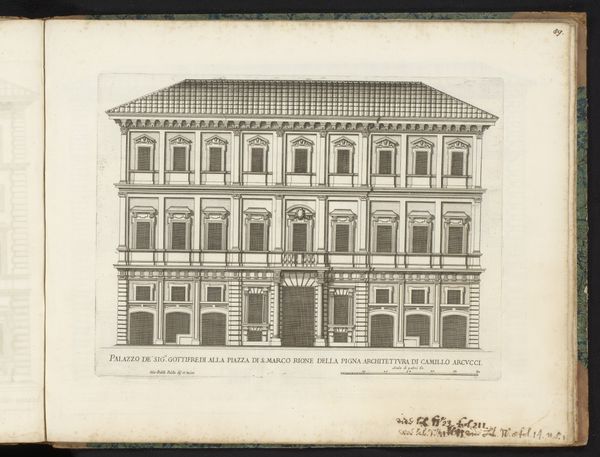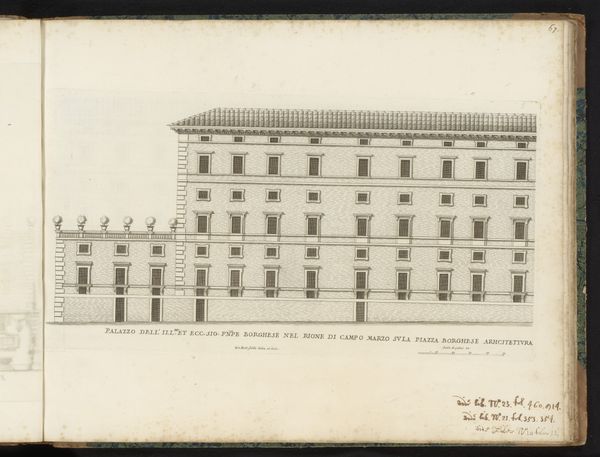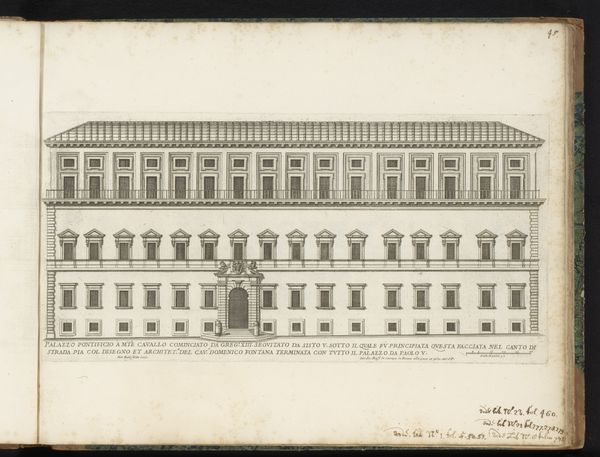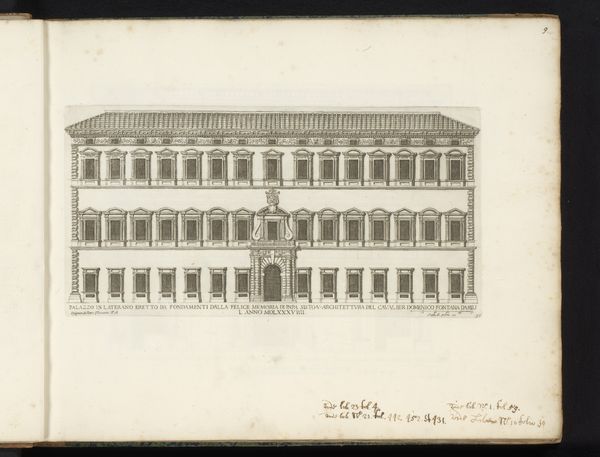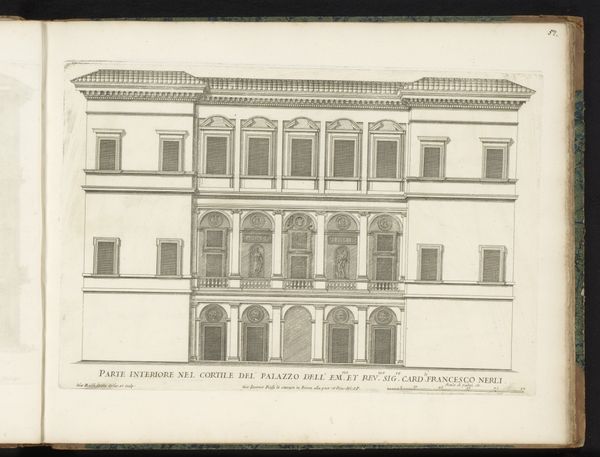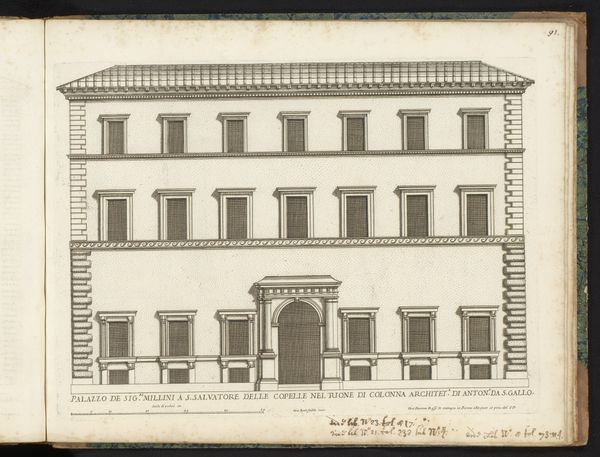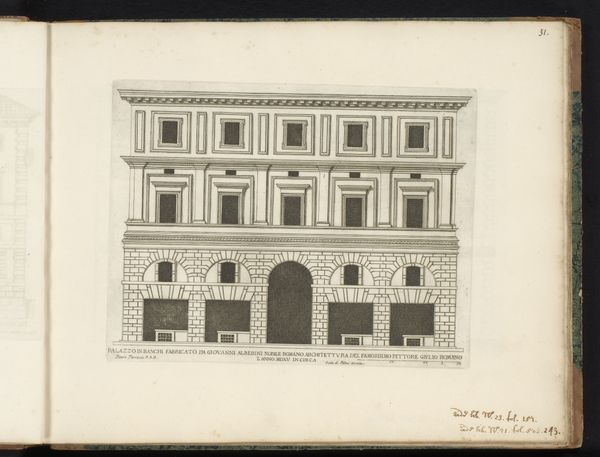
drawing, print, etching, paper, ink, architecture
#
drawing
#
baroque
# print
#
etching
#
paper
#
ink
#
cityscape
#
architecture
Dimensions: height 174 mm, width 414 mm
Copyright: Rijks Museum: Open Domain
Curator: Look at this print from after 1655, Giovanni Battista Falda's "Façade van Palazzo della Cancelleria," here at the Rijksmuseum. It's an etching on paper, offering a detailed depiction of the Palazzo’s front. Editor: My initial impression is of immense order. The façade presents itself as a series of repeated units. What’s striking to me is the emphasis on line, and I'm drawn to imagine the labor involved in the precision and repetition in this technique. Curator: Absolutely, the Baroque period certainly favored grandeur, and that's evident here. What I find particularly interesting is how prints like these circulated architectural ideas. They allowed for the dissemination of Roman styles throughout Europe, influencing architectural trends and even solidifying papal power and its aesthetics through these reproducible images. Editor: From a material perspective, I'm thinking about the physical act of creating this print, and of building the palace. Etching requires acid, metal, and skillful hands. The palace, stone, quarrying, immense amount of physical labour. It emphasizes how grand aesthetics emerge from practical and socially structured work. Curator: It also raises questions about accessibility. Who had access to these prints? They offered a glimpse into the lives of the elite and influenced the aspirations of the burgeoning middle class, informing their perceptions of ideal urban environments. Editor: Good point, it speaks to the social function of such pieces, where labor makes possible elite ideals— circulated through printmaking and available to aspirational classes as representations. The very ink on the paper links back to the grand building. Curator: Indeed, it's a powerful testament to the convergence of power, artistry, and aspiration. The building itself also broadcasts its message. Editor: And a fine example of how examining materials and modes of production allows for broader discussions of taste, labor, and even class itself.
Comments
No comments
Be the first to comment and join the conversation on the ultimate creative platform.
